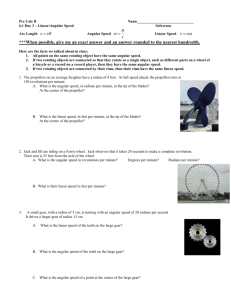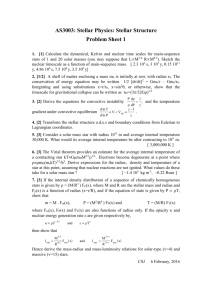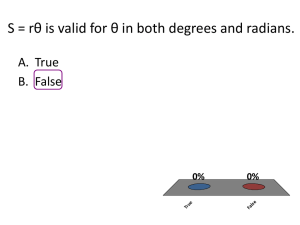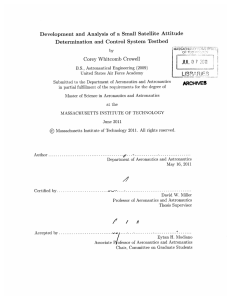Physics 111 HW22 - University of St. Thomas
advertisement
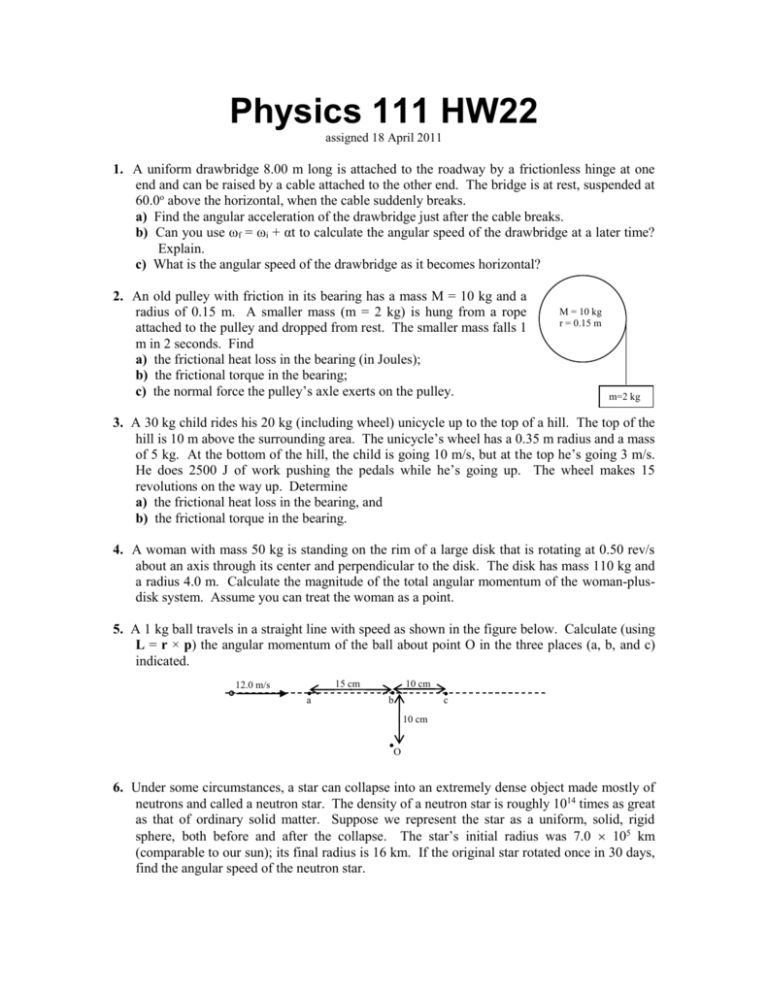
Physics 111 HW22 assigned 18 April 2011 1. A uniform drawbridge 8.00 m long is attached to the roadway by a frictionless hinge at one end and can be raised by a cable attached to the other end. The bridge is at rest, suspended at 60.0o above the horizontal, when the cable suddenly breaks. a) Find the angular acceleration of the drawbridge just after the cable breaks. b) Can you use ωf = ωi + αt to calculate the angular speed of the drawbridge at a later time? Explain. c) What is the angular speed of the drawbridge as it becomes horizontal? 2. An old pulley with friction in its bearing has a mass M = 10 kg and a radius of 0.15 m. A smaller mass (m = 2 kg) is hung from a rope attached to the pulley and dropped from rest. The smaller mass falls 1 m in 2 seconds. Find a) the frictional heat loss in the bearing (in Joules); b) the frictional torque in the bearing; c) the normal force the pulley’s axle exerts on the pulley. M = 10 kg r = 0.15 m m=2 kg 3. A 30 kg child rides his 20 kg (including wheel) unicycle up to the top of a hill. The top of the hill is 10 m above the surrounding area. The unicycle’s wheel has a 0.35 m radius and a mass of 5 kg. At the bottom of the hill, the child is going 10 m/s, but at the top he’s going 3 m/s. He does 2500 J of work pushing the pedals while he’s going up. The wheel makes 15 revolutions on the way up. Determine a) the frictional heat loss in the bearing, and b) the frictional torque in the bearing. 4. A woman with mass 50 kg is standing on the rim of a large disk that is rotating at 0.50 rev/s about an axis through its center and perpendicular to the disk. The disk has mass 110 kg and a radius 4.0 m. Calculate the magnitude of the total angular momentum of the woman-plusdisk system. Assume you can treat the woman as a point. 5. A 1 kg ball travels in a straight line with speed as shown in the figure below. Calculate (using L = r × p) the angular momentum of the ball about point O in the three places (a, b, and c) indicated. 15 cm 12.0 m/s a 10 cm b c 10 cm O 6. Under some circumstances, a star can collapse into an extremely dense object made mostly of neutrons and called a neutron star. The density of a neutron star is roughly 1014 times as great as that of ordinary solid matter. Suppose we represent the star as a uniform, solid, rigid sphere, both before and after the collapse. The star’s initial radius was 7.0 105 km (comparable to our sun); its final radius is 16 km. If the original star rotated once in 30 days, find the angular speed of the neutron star.


